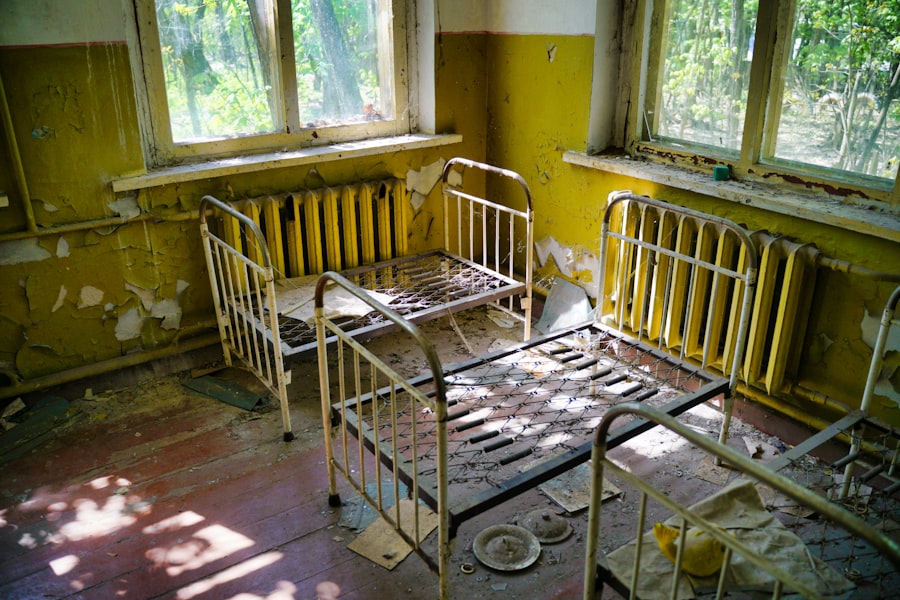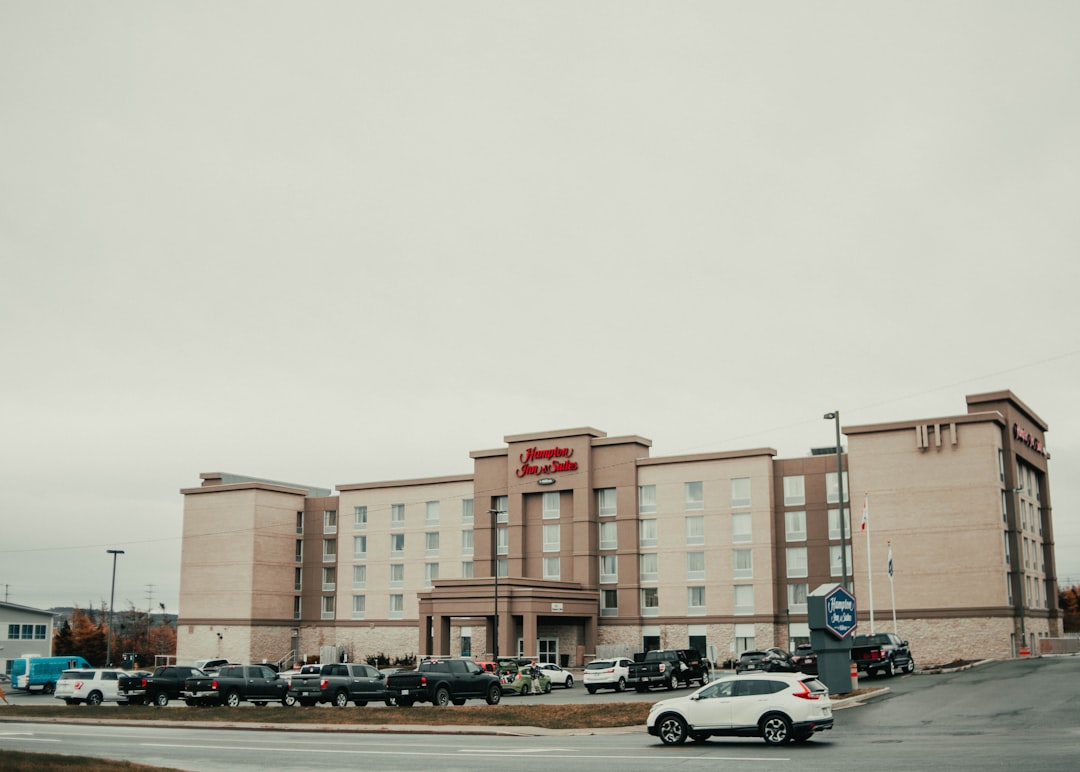As you navigate the complexities of the healthcare system, you may find yourself increasingly aware of the financial struggles faced by nursing homes. These facilities, which provide essential care for the elderly and those with disabilities, are often caught in a web of rising costs and fluctuating revenues. The financial health of nursing homes is not just a concern for administrators; it directly impacts the quality of care that residents receive.
Understanding these financial challenges is crucial for anyone involved in elder care, whether you are a family member, a healthcare professional, or a policymaker. The financial landscape of nursing homes has become increasingly precarious in recent years. With the aging population and the growing demand for long-term care services, you might expect that nursing homes would thrive.
However, many facilities are struggling to maintain their operations due to a combination of factors that contribute to rising costs and declining revenues. As you delve deeper into this issue, you will discover that the financial stability of nursing homes is a multifaceted problem that requires careful consideration and innovative solutions.
Key Takeaways
- Nursing homes face significant financial challenges due to rising operational costs and declining occupancy rates.
- Government funding, including Medicare and Medicaid, plays a crucial role in maintaining nursing home financial stability.
- Staffing costs are a major factor contributing to financial struggles, impacting the quality of care provided.
- The COVID-19 pandemic has exacerbated financial difficulties for nursing homes, affecting both revenue and expenses.
- Implementing strategic financial management and focusing on quality care are essential for the future sustainability of nursing homes.
Factors Contributing to Rising Costs in Nursing Homes
One of the primary factors driving up costs in nursing homes is the increasing expense of providing quality care. As you may know, the needs of residents are becoming more complex, requiring specialized services and skilled staff. This shift necessitates higher wages for caregivers and additional training programs, which can strain budgets.
Moreover, the cost of medical supplies, equipment, and medications continues to rise, further exacerbating financial pressures on these facilities. In addition to direct care costs, regulatory compliance also plays a significant role in escalating expenses. Nursing homes must adhere to stringent federal and state regulations designed to ensure resident safety and quality of care.
While these regulations are essential for protecting vulnerable populations, they often require substantial investments in infrastructure and staff training. As you consider the implications of these rising costs, it becomes clear that nursing homes must find ways to balance quality care with financial sustainability.
Impact of Declining Occupancy Rates on Nursing Home Finances

Declining occupancy rates present another significant challenge for nursing homes. As you may have observed, many families are opting for alternative care options, such as home health services or assisted living facilities. This trend can lead to lower revenues for nursing homes, making it difficult for them to cover their operating costs.
When occupancy rates drop, fixed costs remain constant, resulting in a precarious financial situation for many facilities. The impact of declining occupancy rates extends beyond immediate financial concerns. You might also consider how this trend affects the overall quality of care provided in nursing homes.
With fewer residents to share costs, facilities may be forced to cut back on staff or resources, ultimately compromising the level of care that residents receive. This cycle can create a vicious loop: as quality declines, occupancy rates may continue to fall, further jeopardizing the financial stability of nursing homes.
The Role of Government Funding in Nursing Home Financial Stability
| Metric | Description | Impact on Financial Stability | Example Data |
|---|---|---|---|
| Medicaid Reimbursement Rate | Amount paid by Medicaid per patient day | Higher rates improve revenue and reduce deficits | Average: 150 per patient day |
| Percentage of Revenue from Government Funding | Proportion of total revenue derived from government sources | Greater reliance can stabilize income but increase vulnerability to policy changes | 65% |
| Government Grants Received | One-time or recurring grants for facility improvements or operations | Supports capital investments and operational costs | Annual average: 500,000 |
| Operating Margin | Net income as a percentage of total revenue | Positive margin indicates financial stability | 3.5% |
| Occupancy Rate | Percentage of beds occupied | Higher occupancy increases revenue, often influenced by funding availability | 85% |
| Staffing Levels Supported by Government Funding | Number of full-time equivalent staff funded through government programs | Ensures adequate care and compliance with regulations | 75 FTEs |
Government funding plays a crucial role in supporting the financial stability of nursing homes. Programs such as Medicare and Medicaid provide essential reimbursement for services rendered to eligible residents. However, as you may know, these funding sources often do not cover the full cost of care, leaving facilities to absorb significant losses.
This shortfall can create a challenging environment for nursing homes striving to maintain high standards while remaining financially viable. In recent years, there has been increasing advocacy for reforming government funding structures to better support nursing homes. You might find it interesting that many stakeholders are calling for adjustments to reimbursement rates and increased funding for quality improvement initiatives.
By addressing these issues, policymakers can help ensure that nursing homes have the resources they need to provide quality care while maintaining financial stability.
Strategies for Nursing Homes to Improve Financial Health
To navigate the financial challenges they face, nursing homes must adopt innovative strategies aimed at improving their financial health. One approach is to diversify revenue streams by offering additional services or programs that cater to the needs of residents and their families. For instance, some facilities have begun providing specialized memory care units or rehabilitation services that attract new residents and generate additional income.
Another effective strategy involves enhancing operational efficiency through technology and process improvements. By investing in electronic health records and other digital tools, nursing homes can streamline administrative tasks and reduce overhead costs.
The Relationship Between Staffing Costs and Financial Struggles in Nursing Homes

Staffing costs represent one of the most significant expenses for nursing homes, directly impacting their financial struggles. As you may know, attracting and retaining qualified staff is essential for providing high-quality care; however, this often comes at a steep price. With rising wages and benefits demands, many facilities find it challenging to maintain adequate staffing levels while staying within budget constraints.
Moreover, high turnover rates among staff can exacerbate financial difficulties. When employees leave, nursing homes must invest time and resources into recruiting and training new hires.
As you consider the implications of staffing costs on nursing home finances, it becomes evident that addressing workforce challenges is critical for achieving long-term financial stability.
The Importance of Quality Care in Attracting and Retaining Residents
Quality care is paramount in attracting and retaining residents in nursing homes. As you may have experienced firsthand or heard from others, families are increasingly discerning when choosing a facility for their loved ones. They seek environments that prioritize safety, comfort, and compassionate care.
When nursing homes deliver high-quality services, they not only enhance resident satisfaction but also improve their reputation within the community. Investing in quality care can yield significant financial benefits as well. Facilities known for their exceptional services often enjoy higher occupancy rates and can command premium pricing for their offerings.
As you reflect on this relationship between quality care and financial success, it becomes clear that prioritizing resident well-being is not just an ethical obligation but also a sound business strategy.
The Impact of COVID-19 on Nursing Home Finances
The COVID-19 pandemic has had a profound impact on nursing home finances, exacerbating existing challenges while introducing new ones. As you may have witnessed or read about, many facilities faced increased operational costs due to heightened infection control measures and staffing shortages during the crisis. These unexpected expenses placed additional strain on already fragile budgets.
Furthermore, the pandemic has led to significant declines in occupancy rates as families hesitated to place loved ones in nursing homes amid concerns about safety. This decline in residents has resulted in decreased revenues for many facilities, making it even more difficult to navigate ongoing financial challenges. As you consider the long-term implications of COVID-19 on nursing home finances, it becomes evident that recovery will require strategic planning and support from various stakeholders.
The Role of Insurance and Medicare/Medicaid in Nursing Home Financial Stability
Insurance coverage plays a vital role in determining the financial stability of nursing homes. Many residents rely on Medicare or Medicaid to cover their long-term care expenses; however, reimbursement rates from these programs often fall short of actual costs incurred by facilities. As you explore this issue further, you will see how inadequate reimbursement can create significant financial strain on nursing homes.
Additionally, private insurance policies can vary widely in terms of coverage for long-term care services. You might find it interesting that some families are unaware of their options or the limitations of their insurance plans when seeking care for loved ones. This lack of understanding can lead to unexpected out-of-pocket expenses for families and further complicate the financial landscape for nursing homes.
The Challenges of Managing Debt and Bankruptcy in Nursing Homes
Managing debt is another critical aspect of maintaining financial stability in nursing homes. Many facilities operate with significant debt loads due to capital investments in infrastructure or renovations aimed at improving resident care. As you may know, high levels of debt can limit operational flexibility and hinder a facility’s ability to respond to changing market conditions.
In some cases, nursing homes may face bankruptcy as a last resort when financial pressures become insurmountable. This situation not only affects the facility’s staff but also has profound implications for residents who depend on consistent care and support. As you consider the challenges associated with debt management in nursing homes, it becomes clear that proactive financial planning is essential for avoiding such dire outcomes.
The Future of Nursing Home Financial Stability
As you reflect on the myriad challenges facing nursing homes today, it is evident that achieving financial stability will require concerted efforts from various stakeholders. From government policymakers advocating for fair reimbursement rates to facility administrators implementing innovative strategies for cost management, everyone has a role to play in ensuring that nursing homes can continue providing essential services. Looking ahead, it is crucial to prioritize quality care while addressing the underlying financial issues that threaten the sustainability of these facilities.
By fostering collaboration among healthcare providers, families, and policymakers, you can contribute to creating a more stable future for nursing homes—one where residents receive the compassionate care they deserve without compromising the financial viability of these essential institutions.
Nursing homes often face financial difficulties that can lead to bankruptcy due to a variety of factors, including rising operational costs and inadequate reimbursement rates from government programs. For a deeper understanding of the financial challenges faced by nursing homes, you can read the article on this topic at How Wealth Grows. This resource provides insights into the economic pressures that contribute to the instability of these facilities and highlights the importance of sustainable financial practices in the healthcare sector.
WATCH THIS 🛑 The Profit of Death: How Wall Street Took Over Senior Care
FAQs
What are common reasons nursing homes go bankrupt?
Nursing homes often go bankrupt due to a combination of factors such as rising operational costs, insufficient reimbursement rates from Medicare and Medicaid, declining occupancy rates, poor financial management, and increased regulatory compliance expenses.
How do reimbursement rates affect nursing home financial stability?
Reimbursement rates from government programs like Medicare and Medicaid are typically lower than the actual cost of care. When these rates do not cover expenses, nursing homes may struggle to maintain profitability, leading to financial difficulties and potential bankruptcy.
Can declining occupancy rates lead to nursing home bankruptcy?
Yes, declining occupancy rates reduce revenue for nursing homes. Factors such as increased competition, changes in patient preferences, and availability of alternative care options can lower occupancy, impacting the facility’s financial health.
What role does regulatory compliance play in nursing home bankruptcies?
Nursing homes must comply with numerous regulations related to patient care, safety, and staffing. Compliance often requires significant investment in staff training, facility upgrades, and administrative processes. These costs can strain financial resources, especially for smaller or underfunded facilities.
How does poor financial management contribute to nursing home bankruptcy?
Ineffective budgeting, lack of financial oversight, and failure to adapt to changing market conditions can lead to cash flow problems and mounting debts. Poor financial management can accelerate the risk of bankruptcy in nursing homes.
Are there external economic factors that impact nursing home financial health?
Yes, broader economic conditions such as inflation, labor shortages, and increased healthcare costs can affect nursing homes. Economic downturns may also reduce the ability of residents or their families to pay for care, further impacting revenue.
What happens to residents if a nursing home goes bankrupt?
If a nursing home files for bankruptcy, residents may be relocated to other facilities or continue care under new management if the facility is sold. Authorities typically work to ensure continuity of care and protect residents’ rights during the transition.
Can nursing homes recover from financial difficulties without going bankrupt?
Some nursing homes can recover through restructuring, improving operational efficiency, securing additional funding, or merging with larger organizations. However, recovery depends on the severity of financial issues and the ability to implement effective changes.
